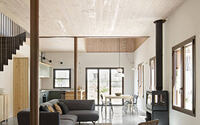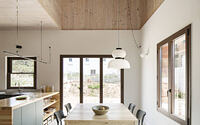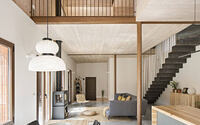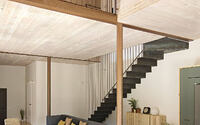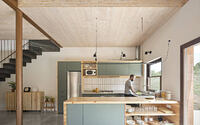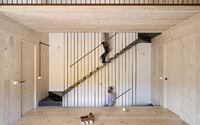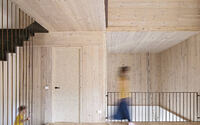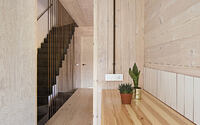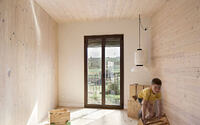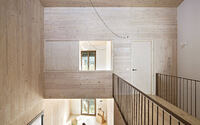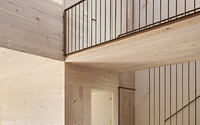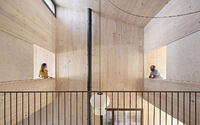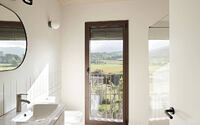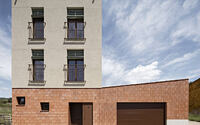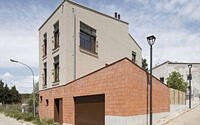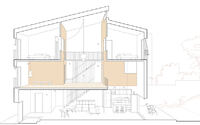Casa MDN by Nook Architects
Casa MDN is a traditional home located in Barcelona, Spain, designed in 2021 by Nook Architects.









Description
We find ourselves in the heartland, in a location surrounded by forest, fields and vineyards in the Penedés region. A small town that, in recent times, has been given new life and seen its population swell thanks to the alternative educational projects of its schools.
The owners wanted to leave the city and telework at a different pace, with the family, surrounded by nature. Their life project included both the educational model of the local schools and the construction of a wooden house with a low environmental impact. They looked to prioritise the quality of the spaces over the built area. To do so, they bought two plots originally intended for terraced houses, yet with the idea of building one single home with three façades, more interior space and greater distance with the neighbouring building.
According to municipal regulations, while both plots may accommodate structures, the corner plot had to be completely consolidated. The project therefore consists of a main volume for the home, situated on the innermost plot, and an adjacent secondary volume for use as a garage, built with a view to consolidating the corner plot.
The home is comprised of three floors, although only the ground floor occupies the entire base of the building. The two upper floors have been shortened to form three tiered spaces, enhancing the cross-ventilation and views from the ground floor to the home’s sloping roof.
Inside, the home has been arranged in such a way that, the higher up in the house, the more private the rooms become. However, at no time does the home lose its sense of community, as all rooms open up onto the triple central space.
In terms of construction, the ground floor was built with a concrete baseboard and thermal insulating clay blocks, while the two upper floors and sloping roof feature dry construction with CLT wood panels. The project succeeded in eliminating thermal bridges due to the substantial thickness of the insulation both inside and outside the home. As a result, and bearing in mind that all the main areas are interconnected, it is possible to regulate the temperature of the home simply through cross-ventilation, the use of roller blinds that prevent solar radiation from penetrating the interior and underfloor heating on the ground floor.
The interior finishes are the result of the home’s construction materials, which have been left exposed, thus showcasing the concrete slab on the ground floor and the wood structure in the upper floors. All metallic elements, including the structural pillars, aluminium trim and railings, have been treated with copper finishes, as have the conduits of all exposed installations. The use of wall coverings was restricted to wet areas, where white tiles are featured alongside terracotta grout. The idea was to find a selection of materials and colours that worked both outside and inside, drawing attention to the home’s construction and structural materials.
The home incorporates a traditional language in its volumetric composition and the design of its façade, conserving privacy from the outside while enhancing the spatial richness within. Thus, the versatility of the home’s spaces and its connection to the surroundings provide the owners a basis on which to build their own future, assuming such diverse functions as those of bedroom, living room, dining room, office, playroom, arts and crafts workshop and reading area, among others.
Photography courtesy of Nook Architects
Visit Nook Architects
- by Matt Watts